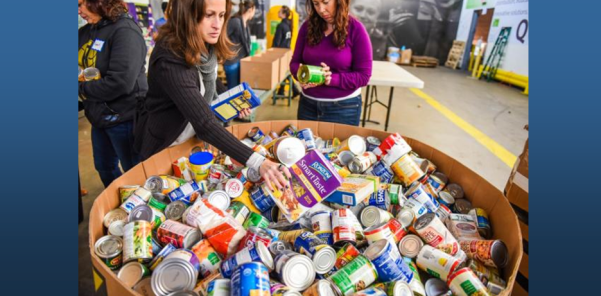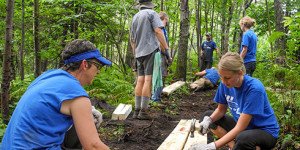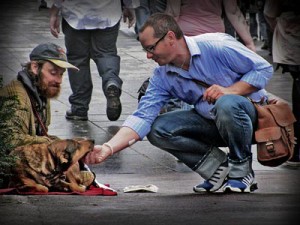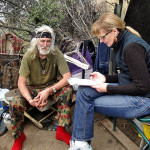
By Elizabeth McGuire
In our final breakfast in the Growing Divide series, this month’s Engage Breakfast highlighted the social sector and its role in our rapidly growing community. Bringing perspectives from city, county and nonprofit entities, our panelists shared their visions for meeting the community’s needs while building equality, compassion and inclusion. Panelists included Delia Garza, District 2 Council Member, City of Austin; Sherri Fleming, County Executive, Travis County, Health & Human Services and Veterans Services; and Matt Kouri, CEO, Greenlights. KXAN news anchor Shannon Wolfson moderator the discussion and Lindsay Bramson, also of KXAN, fielded audience questions.
Some take-aways from the morning:
How is our community doing in meeting needs?
Matt Kouri summed it up by saying, “We’re doing good, but not great.” Kouri called the non-profit sector the “primary vehicle for social change in our community.” With 6,000 non-profit organizations in the region, we should be making a lot of inroads but that sector as a whole is struggling partly because we have so many organizations. According to Kouri, Austin has more non-profits on a per capita basis than any city or community in the southwestern United States. Most of these nonprofits are relatively small. Approximately 72 percent of the organizations have income below $100,000. The main goal, said Kouri, should be to embrace new business models and apply innovation and entrepreneurship to our social sector.
According to Delia Garza, Austin’s funding to social sectors is significantly smaller than peer cities such as San Antonio, Seattle and San Francisco. As far as needs being met, Garza says it depends who you ask. “It always depends on who is in office and what they focus on and what matters to them.” In Garza’s district, health and wellness issues, childhood obesity, and food deserts are all significant concerns and challenges.
What does our community need the most?
In 2013, Travis County had 1.1 million residents, explained Sherri Fleming, and 26 percent of those people live in the unincorporated areas of Travis County without access to social services that are in the core. “Many of our residents experience geographical or linguistic isolation,” said Fleming, “so just those two things are an extreme call to us to try to do business differently.”
There’s no magic bullet solution, said Kouri, but he believes Austin must invest in the most innovative organizations in our community that are making a difference. “Of the 6,000 non-profits, about a third are in health and human services and they generate about $1.8 billion to run their economic engines to serve people. The city and the county is about $50 million out of $1.8 billion. The real solution, Kouri says, is individual donors. “The vast majority of fuel comes from individuals writing checks.”
He also believes Austin must build the infrastructure in the region and make our region “less Austin-centric.” Public transportation is a way to make sure people have access to food, services and community. “The whole dynamic is changing and we can’t continue to act like we are a one-city, small-town community,” Kouri said.
How does our city funding compare to peer cities?
Garza explained that 2 percent of Austin’s budget is for health and human services. That’s lower than Denver, San Antonio, Seattle and San Francisco. San Antonio’s is 6 percent, even though Austin’s population is catching up with San Antonio.
Garza noted that even though the government provides a very small percentage of funding, compared to other entities, cities and counties don’t fund just because they are dying to give money away. “We’re doing it because there’s a gap to fill,” said Garza. “If there wasn’t the need there, we wouldn’t need to be budgeting it.”
She agrees that Austin needs to be more affordable, but she is concerned about upcoming discussions regarding tax reform and homestead exemptions. “I really hope when the discussion of a possible homestead exemption starts,” said Garza, “I hope we can look at what that takes out of our budget and how will that effect the critical services that we currently provide.”
How do we increase that 2 percent funding?
Fleming was clear: “It should be unacceptable to us as a community to hear some of these things. We really have to rise up and support that those services are important. Government and government staff can put those issues out there but your elected officials respond to what YOU say.”
Garza agreed, saying, “You make it a priority and you support people who make it a priority.”
 How do we get non-profits and businesses to work together?
How do we get non-profits and businesses to work together?
Fleming believes that it first starts with the expectations of funders. They should require collaboration from the organizations they support.
Kouri suggests that non-profit leaders should focus their energy not on lobbying the county or city for minute changes, but instead toward making their organization a more attractive partner or target for the business community. “The vast majority of the wealth in this community sits with the businesses and the business leaders,” said Kouri, “and they aren’t seeing the kinds of investment-ready business models that would attract tens and hundreds of millions of dollars of investment capital.”
How do you assess a program as innovative and how do you evaluate social impact outcomes?
People define innovative in a hundred different ways, but Kouri prefers the notion of “using the powers of market forces for good.” He believes even the term “non-profit” could be innovated from its negative connotation to something more accurate like “mission-driven” organizations.
Fleming suggested looking at best practices and spending money to have independent evaluations. “My grandmother used to say, ‘You’re not a prophet in your own land,’ said Fleming. “You have to look at the prophets in other lands and compare what you’re doing.”
What’s working and what are we doing well?
All three panelists agreed that the region’s social sector partners collaborate well. Fleming added, “We know how to do collaboration in this community, and we should require it of new people who come into the community.”
Kouri cited ECHO and Mobile Loaves & Fishes as excellent examples of innovation for their work with Austin’s homeless population. Garza praised the new Dove Springs Park as a successful collaboration of government, business and non-profit entities.
 How do we balance the need for funding treatment of social problems vs. prevention?
How do we balance the need for funding treatment of social problems vs. prevention?
Garza said she would always advocate putting money toward prevention. “If we reach people sooner, we spend a lot less money.”
Fleming, agreed and said that one of the biggest costs at the county is operating a jail. “Unfortunately, the jail continues to be the largest mental health facility in this community.” She believes that if we can invest in community services at the front end, we help people before law enforcement has to get involved.
How do we overcome the negative stigma associated with raising funds?
Kouri described non-profits as being “in this strange business of taking other people’s money and using it to inject ourselves into other people’s lives.” This leads many non-profits to be inherently risk-averse. Successful business are often some of the biggest risk takers, and they are open to failure. He believes non-profits would succeed more if they could create a culture where innovation and failure can happen.
What are the hard questions that we haven’t addressed?
Housing, said Fleming. Affordable housing is not just an issue for current homeowners, but something everyone will need to consider as their parents age or their children leave home. Everyone is affected by the lack of affordable housing.
Kouri wonders if the city is going to be a city that’s known for actually solving our community problems in a uniquely Austin way. “That way, I think, means embracing the blurring line between social value and economic value.”
Garza says the hardest question is, “What is the role of government?” I hear people say, ‘If this were a private business, we would be losing money. My response: Well, it’s not a private business. We can’t run government that way.”
Call to Actions
Delia Garza: Be part of the city budget conversation. Send an email. Get involved in your city. I’m always amazed at the low voter turnout for city elections–the city level has the most impact on your life. Start with an email and go from there.
 Matt Kouri: Invest in a social entrepreneur in this community. Write a check; show up to volunteer. Non-profits are doing the most good in the community and they can use your help. Every dollar and every hour makes a huge difference.
Matt Kouri: Invest in a social entrepreneur in this community. Write a check; show up to volunteer. Non-profits are doing the most good in the community and they can use your help. Every dollar and every hour makes a huge difference.
Sherri Fleming: All of the above. Absolutely get involved. You can email your commissioners and the county judge. You can speak at citizen’s communication at the county. Find a non-profit that speaks to your heart. And yes, your money is important and much needed, but your time is as well. Consider the administrative costs of running non-profits. If you have a talent you can share, you may be helping them to channel more money into the community by what you may think is just a little bit of service.
You can listen to the podcast here:

